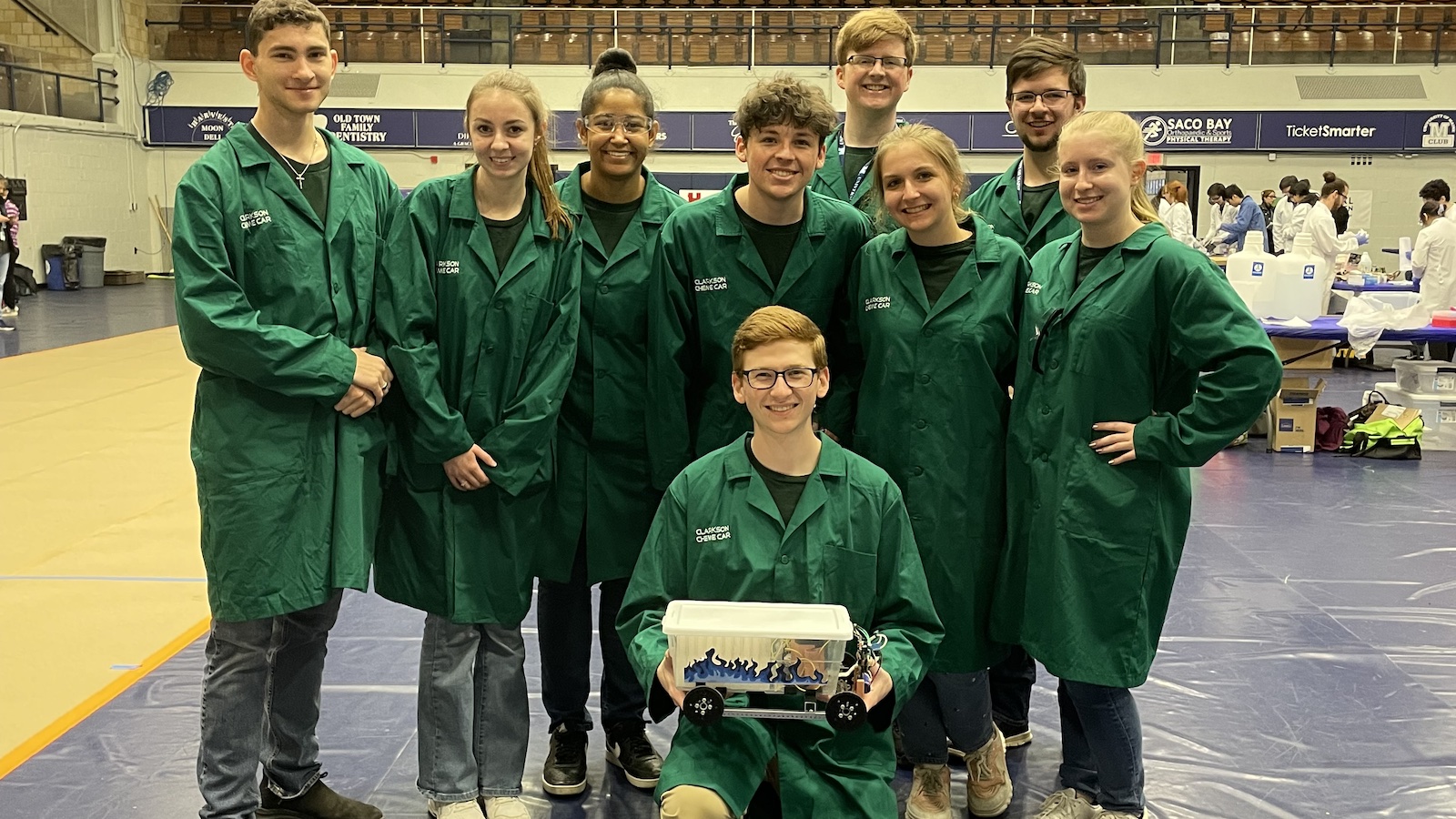Chem-E-Car SPEED Team

Students in Chem-E-Car develop practical industry skills spanning multiple modern engineering disciplines, making it a dynamic and interdisciplinary team.
Chem-E-Car Team is a SPEED Team, (Student Projects for Engineering Experience and Design), SPEED Teams are 100% student-run and managed.
Comprising passionate students from various engineering backgrounds, including chemical, mechanical, and electrical engineering, the team collaborates closely to achieve its goals. In the laboratory, they conduct intricate experiments that challenge their scientific knowledge and problem-solving abilities. Moreover, they delve into the world of design, utilizing computer-aided design (CAD) software to create schematics and circuit designs, thereby honing their skills in both mechanical and electrical engineering. These experiences culminate in the production of comprehensive engineering design reports that showcase their analytical thinking and technical writing capabilities. Through these hands-on activities, Chem-E Car not only fosters innovation but also equips its members with the skills necessary to thrive in a rapidly evolving engineering landscape.
About Chem-E-Car Team
The AIChE Chem-E-Car Competition is an annual event that tasks students to create a battery, car, and timed reaction of their own design. This allows students to experience the design process, starting from research and ending in a fully function car that the team takes to competition. At competition, the team is given a distance between 15 and 30 meters. The timed stopping reaction is adjusted to tell the car to stop at the given distance.
Our Sub Teams
The powering team researches, designs, and builds the battery for the car. Students on the powering team use their knowledge and skills in chemistry and engineering to create an efficient battery that supplies sufficient power to the motor on the car which allows the car to move.
- Research: At the beginning of every year, the powering team researches new ideas for the battery of the car. They look for batteries that would be easy to make and have a high energy density.
- Design and Build:
Once the team has their idea for the battery, they design the battery trying to keep it as small and light-weight as possible. After the design is complete, the model is 3D printed and/or built from other materials.
Stopping team produces a clock reaction that changes in transparency or color after a specified time based on our amount of reagent. When the precipitate forms light can no longer pass through the sensor in our car, triggering it to stop. In the past we have used iodine clock and cinnamaldehyde clock.
- Cinnamaldehyde Reaction: This reaction is a double aldol condensation reaction catalyzed by hydroxide. The Dicinnamalacetone product has low solubility in ethanol. As the reaction proceeds the product precipitates out of the solution.
- Iodine Clock: This reaction is a redox reaction meaning that electrons transfer between species. The reaction produces a color change when iodine reacts with starch. As the reaction proceeds the product precipitates out of the solution.
The build team designs the drive train, chassis, control system, and secondary containment for the car. Students on the build team work in different CAD software to design and eventually machine the different parts that go on the car. They also design circuits and program the control system that allows the car to work.
- Drive Train and Chassis: The drive train and chassis are designed to be easy to machine, and easy to mount to while not being overly complex and heavy.
- Control System: The control system is designed to read when the stopping reaction undergoes change, regulate voltage of the battery, and help keep the car going straight.
Women in STEM
Meet Carolyne - One of Clarkson's Chem-E-Car team presidents. Carolyne explains her role on the team, competition rules, society of women engineers, and more!
Contact Chem-E-Car
Here’s where we are and how to get in touch:
Clarkson University Chem-E Car
8 Clarkson Ave
Potsdam, NY 13699
Email: chemecar@clarkson.edu
Instagram: @clarksonchemecar
